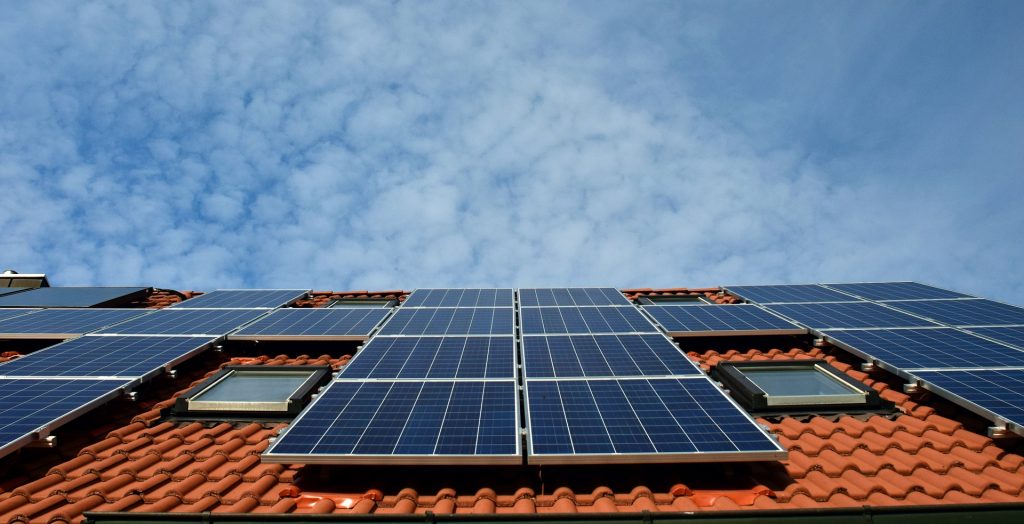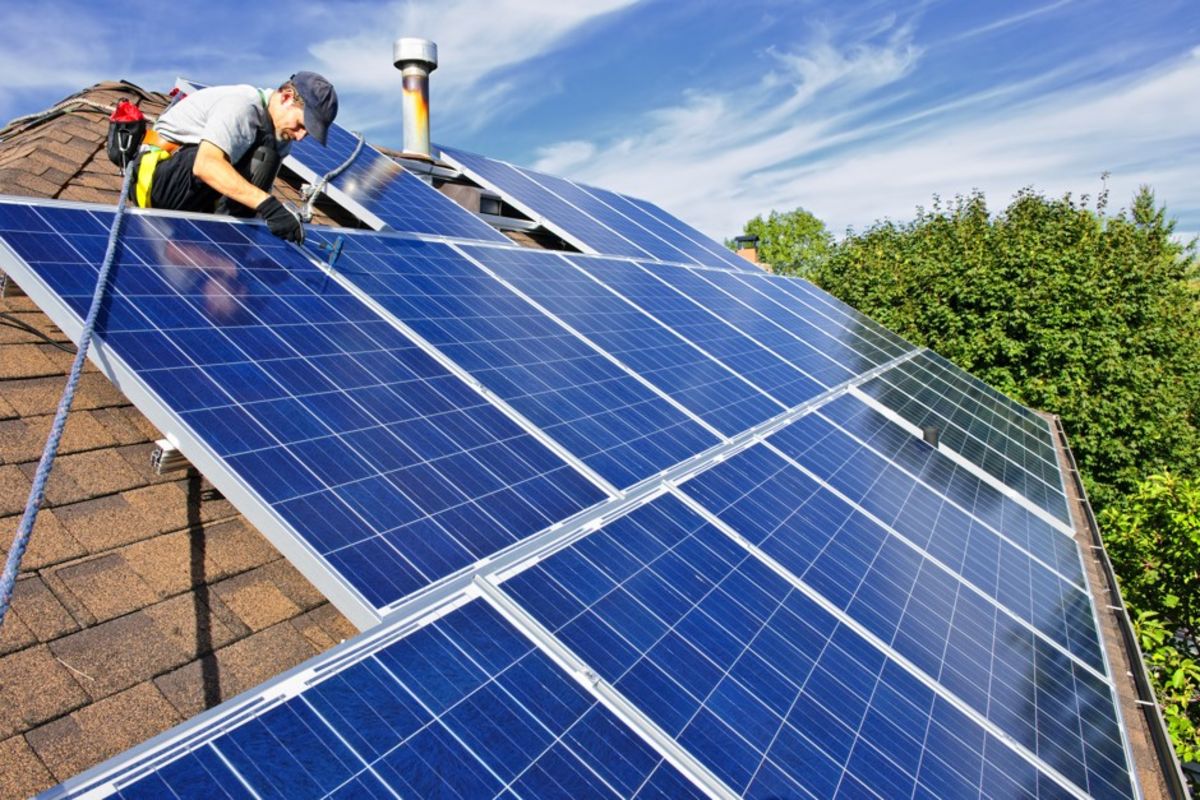
Going solar is a savvy way to lower energy bills and shrink your carbon footprint. But can solar panels generate all the electricity a home needs?
Short answer: Yes, but with some conditions. If you have enough solar panels, you can actually generate all the electricity that your house requires during those hours when the sun is shining. But solar panels aren’t the solution on their own; they’ll only generate electricity at night or on cloudy days if you have backup storage.
Nighttime Reliance on Solar Batteries
Acquiring a solar energy storage system is the only way to power a home with just solar energy. When you use a solar battery, any additional energy or excess generated by your solar panels throughout the day gets transmitted and stored in the rechargeable batteries. Then, when night falls, your system uses energy from the battery to power your home through the night.
For anyone whose main reason for going solar is to be more independent and reduce their carbon footprint, energy storage is the smartest way to achieve both of these goals. But it’s not the cheapest option. Solar battery installation typically ranges from $4,500 to $18,000, and you may need to install several batteries to meet all your home’s energy-storage needs. If you’re looking for tailored options, Melbourne battery solutions can help you make the right choice. So unless the state you live in requires net metering, a battery is unnecessary if your main goal in installing solar power is to save money.
Can Solar Panels Eliminate Your Electricity Bill?
Using solar panels, even without a battery, can actually eliminate your electricity bill—assuming your utility has net metering.
A grid-tied solar system allows you to send excess power to the grid during peak sunlight hours. In return, they send you energy credits, which offset your nighttime power use. Some utilities provide full retail net metering, so every kilowatt-hour you provide to the grid reflects one free kilowatt-hour of electricity in return.
Though the electricity generated by your panels may not fully power your home year-round, net metering means you’ll be able to cut down on—if not totally eliminate—your energy costs.
What Is Net Metering?
Net metering allows homeowners and businesses with solar panels to stay connected to the electricity grid while earning credits for any excess power they generate. This system ensures you get the most value from your solar panels, even when they produce more electricity than your home needs.
How Does Net Metering Work?
When your solar panels generate electricity, your home uses that power first. If your system produces more energy than you consume, the extra electricity is automatically sent to the grid. Your utility company then compensates you—usually through bill credits—at a rate that may be comparable to standard grid electricity prices.
This means that during peak sunlight hours, when your solar panels are most productive, you can build up credits. Later, when your panels generate less power—such as at night—you can draw electricity from the grid and use your accumulated credits to offset the cost.
In Australia, compensation is based on power generation pricing, meaning you only pay for the electricity you actually use beyond what your system produces.
Types of Solar Metering in Australia
Australia has two main types of solar metering:
- Net Metering – Your home consumes solar power first, and only excess energy is exported to the grid in exchange for credits. This is the most common and cost-effective option for residential solar users.
- Gross Metering – All solar power generated is sent directly to the grid, and you are paid a set rate for it. You then buy back the electricity you need. This system is less common and typically applies to larger commercial solar installations.
To maximize savings with either system, your solar PV array should be properly sized to match your household’s energy needs something battery installation experts can help you assess and implement effectively.
Does Net Metering Apply in Your State?
While solar power is widely used in Australia, net metering policies vary by state and utility provider. Some areas offer full retail net metering, while others provide feed-in tariffs, which work similarly but may have different compensation rates.
Currently, net metering is available in:
- Adelaide
- Alice Springs
- Blacktown
- Central Victoria
- Moreland
- Perth
- Townsville
If you live outside these areas, your utility provider may still offer feed-in tariffs, where you receive credits or rebates for exporting solar energy to the grid. Availability and rates vary, so it’s best to check with your local electricity provider.
The Benefits of Net Metering
There are plenty of benefits to net metering, both for the homeowner and the environment. Pairing a solar panel system with a grid connection allows for the greatest savings and reduces the carbon footprint.
1. Lower Energy Bills
One of the greatest benefits is cost savings. If your solar panels produce more electricity than you consume, net metering lets you earn credits or even sell excess energy back to the grid. You are only paying for electricity when your usage is higher than your production—this will help lower or even eliminate your monthly bill.
2. Power Multiple Buildings
Net metering isn’t only something for your home. Solar panels can also be installed on garages, woodsheds, lodges, and even RVs to power several structures and help reduce fossil-fuel dependence. Solar energy is a versatile and scalable solution whether you live in an urban apartment or a rural farm.
3. Minimize Your Carbon Footprint
One of the main benefits of switching to solar is being able to conserve natural resources by reducing your carbon footprint through a diminished dependence on fossil fuels. It promotes more mindful energy consumption in daily life and incorporates sustainability into your daily routine.

How Many Solar Panels Do You Need to Fully Power Your Home?
The average Australian household needs 16 to 20 solar panels to offset yearly electricity bills. But the specific number can vary based on your energy usage, panel efficiency, and sunlight availability in your area.
To get an estimate of how many panels you’ll need, let’s do the following:
1. Check Your Energy Usage
Check your electricity bills for your average monthly kilowatt-hour (kWh) usage. Calculate the average based on a full year of data, as energy use does vary throughout the year.
2. Determine Your Sunlight Hours
The peak sun hours in your area dictate the efficiency of your solar system. Locations with more sun need fewer panels, while areas with less sun need a bigger system.
3. Assess Your Solar Panel Output
Solar panels come in different wattages, typically between 300W and 400W per panel. Higher wattage panels generate more electricity, meaning you’ll need fewer to meet your energy needs.
For example, 16 panels with 300W each provide 4.8 kW of total capacity (since 1 kW = 1,000W). In ideal conditions, this system could generate 4.8 kWh per hour, though real-world performance will be lower due to weather and efficiency losses.
4. Calculate How Many Panels You Need
Let’s assume:
- Your home uses 893 kWh per month
- You receive 4 peak sunlight hours per day
First, calculate your monthly solar output per kilowatt installed:
4 hours × 30 days = 120 kWh per month per kW of solar capacity
Now, determine the total system size required:
893 kWh ÷ 120 kWh = 7.44 kW (rounded up to 7.5 kW)
If using 400W panels, the number needed is:
7,500W ÷ 400W = 18.75 panels (rounded up to 19 panels)
Can Solar Power Your Entire Home?
When you have a good net metering program, solar panels can cover your electricity costs, even if they don’t provide 100 percent of your energy needs. However, if net metering isn’t available where you live, relying solely on solar isn’t likely to be economical — at least not until the installation cost comes down.
Is Battery Storage Worth It?
Solar battery storage further reduces dependency on the grid, so you can use energy you’ve stored in the day, at night, or during outages. However, batteries are expensive, so they’re preferable if you:
- Energy independence is a top priority
- Want to reduce your carbon footprint
- Have the budget to purchase a complete solar-plus-storage system
If those factors align with your objectives, a solar power system with battery storage will be a sustainable and stable energy answer for your home.
